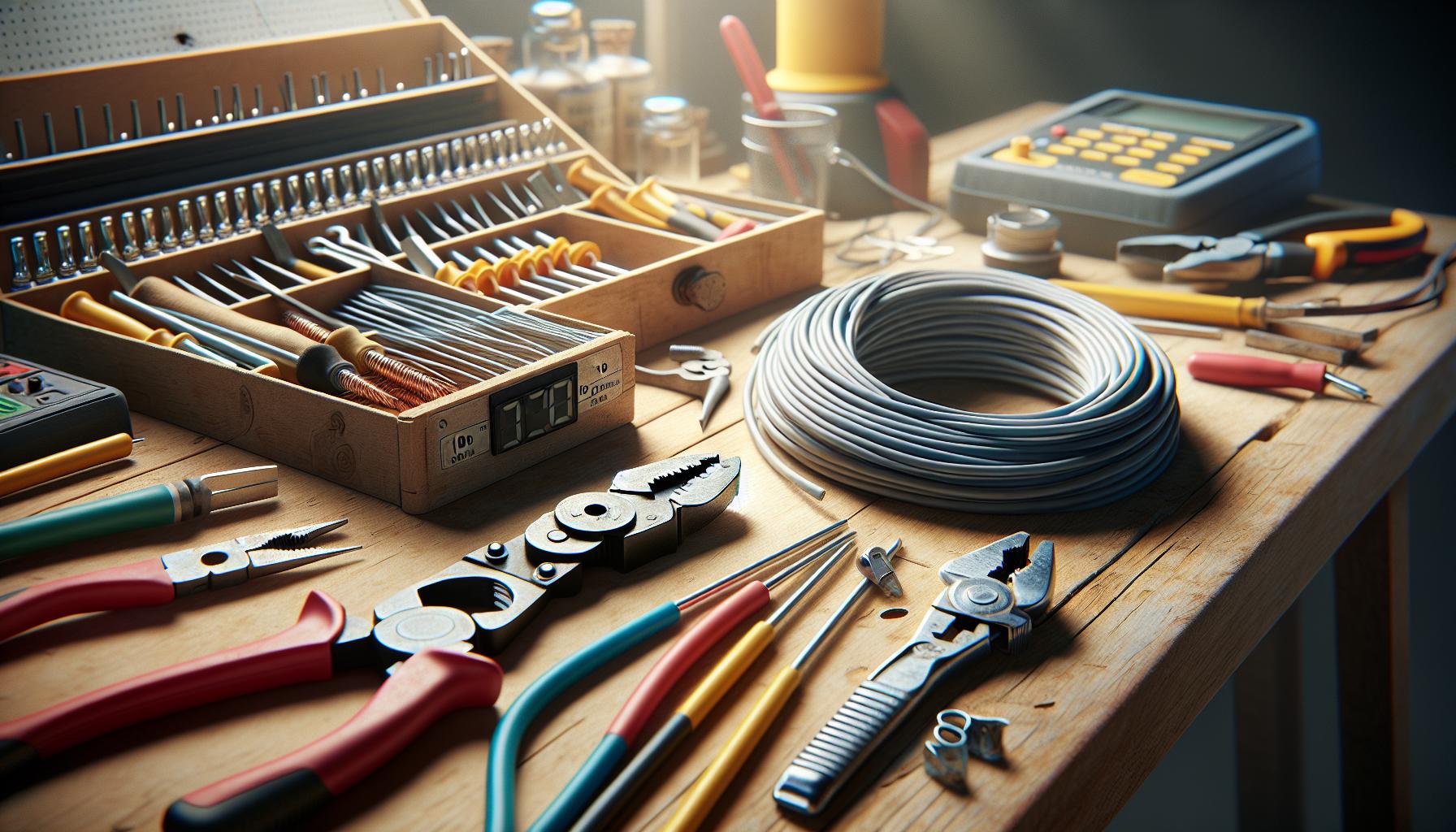When it comes to electrical wiring, understanding the right gauge for your circuit is crucial for safety and efficiency. Many DIY enthusiasts and homeowners often wonder if they can use 12 gauge wire on a 30 amp circuit. This question is not just about meeting code requirements; it’s also about ensuring the integrity of the electrical system and preventing potential hazards.
Using the correct wire gauge can make all the difference in performance and safety. While 12 gauge wire is commonly used for various applications, it’s essential to know its limitations when paired with higher amperage circuits. This article will explore the implications of using 12 gauge wire on a 30 amp circuit, helping readers make informed decisions for their electrical projects.
Can I Use 12 Gauge Wire On A 30 Amp Circuit
Wire gauge and ampacity play crucial roles in electrical installations. Properly understanding these concepts ensures safety and compliance with electrical codes.
What Is Wire Gauge?
Wire gauge refers to the American Wire Gauge (AWG) system, which measures the diameter of electrical wires. A smaller gauge number indicates a larger diameter wire. For example, 12 gauge wire has a diameter of approximately 0.0808 inches, while 10 gauge wire measures 0.1019 inches. This measurement impacts the wire’s capacity to carry electrical current without overheating.
The Importance of Ampacity
Ampacity is the maximum amount of electric current a conductor can safely carry. It varies based on wire gauge, insulation type, and environmental conditions. For instance, 12 gauge wire typically handles up to 20 amps in residential wiring. Using 12 gauge wire on a 30 amp circuit exceeds its ampacity limits, posing risks of overheating and fire hazards. Accurate ampacity considerations protect not only the wiring but also the entire electrical system.
Is 12 Gauge Wire Suitable for 30 Amp Circuits?

Using 12 gauge wire on a 30 amp circuit poses safety risks due to its inadequate ampacity. Adhering to electrical codes is crucial to ensure proper operation and prevent hazards.
National Electrical Code (NEC) Guidelines
The National Electrical Code (NEC) specifies wire gauge requirements based on amperage. For a 30 amp circuit, the NEC recommends using at least 10 gauge wire. This guideline supports safety by preventing overheating and reducing fire risks associated with under-sized wiring. Compliance with NEC guidelines ensures that installations meet safety standards and function effectively.
Practical Applications and Considerations
When considering wire gauge for a 30 amp circuit, practicality plays a significant role. Electricians commonly use 10 gauge wire for such applications. Using 12 gauge wire may seem convenient for small projects, but it can lead to malfunctioning circuit breakers and potential harm. Always evaluate the load requirements and ensure compliance with local electrical codes. Proper wire selection enhances the overall safety and reliability of electrical systems.
Potential Risks of Using 12 Gauge Wire
Using 12 gauge wire on a 30 amp circuit introduces various safety hazards that can compromise both personal and property safety. Awareness of these potential risks is crucial for maintaining a reliable electrical system.
Overheating and Electrical Fires
Overheating occurs when the current flowing through a wire exceeds its ampacity. For 12 gauge wire, the capacity typically tops out at 20 amps. Circulating 30 amps can cause the wire’s temperature to rise significantly. As the wire heats up, insulation degrades, increasing the likelihood of short circuits and electrical fires. The National Fire Protection Association (NFPA) estimates that electrical heating equipment accounts for about 47% of home structure fires. Therefore, adhering to the appropriate wire gauge is essential for preventing overheating and mitigating fire risks.
Equipment Damage and Circuit Breaker Issues
Using 12 gauge wire on a 30 amp circuit can lead to equipment damage. Appliances and devices designed for specific amperage may malfunction if supplied with higher voltages from an insufficient wire gauge. This malfunction can result in an expensive replacement of electrical devices and can trigger warranties to become void. Additionally, incorrect wiring can cause circuit breakers to trip frequently or fail altogether. This failure compromises the safety mechanisms in place to protect the overall electrical system, leading to increased outages and potential hazards.
Alternative Wire Options
Choosing the right wire gauge is essential for safety and efficiency in electrical installations. Several alternatives to 12 gauge wire exist for various applications, particularly in high-amperage scenarios.
10 Gauge Wire and Its Benefits
10 gauge wire is the standard choice for a 30 amp circuit. It can safely handle the required amperage without overheating, offering a significant advantage over thinner wires. Its thicker diameter allows for higher current capacity and reduced voltage drop, which enhances performance in longer runs. Additionally, 10 gauge wire is more resistant to physical damage, improving its durability in various environments. Using 10 gauge wire reduces risks associated with overheating, fire hazards, and circuit failure, aligning with NEC guidelines.
When to Use 14 Gauge Wire
14 gauge wire is suitable for circuits with lower amperage, typically handling up to 15 amps for general lighting and receptacle circuits. It should not be utilized for 30 amp applications. Implementing 14 gauge wire in circuits where the load requirements do not exceed its current capacity can ensure optimal performance and safety. This wire size is commonly adopted in residential applications, including lighting and low-power devices. Proper use of 14 gauge wire aids in maintaining efficient electrical systems without risking equipment damage or safety violations.
Using 12 gauge wire on a 30 amp circuit isn’t advisable due to significant safety risks. It’s crucial to adhere to the National Electrical Code guidelines, which recommend at least 10 gauge wire for this amperage. Choosing the proper wire ensures not only compliance but also the safety and efficiency of the electrical system.
Using inadequate wire can lead to overheating, equipment damage, and even fire hazards. By understanding the implications of wire gauge and ampacity, individuals can make informed decisions that protect their homes and properties. Prioritizing safety in electrical installations is essential for long-term reliability and peace of mind.
